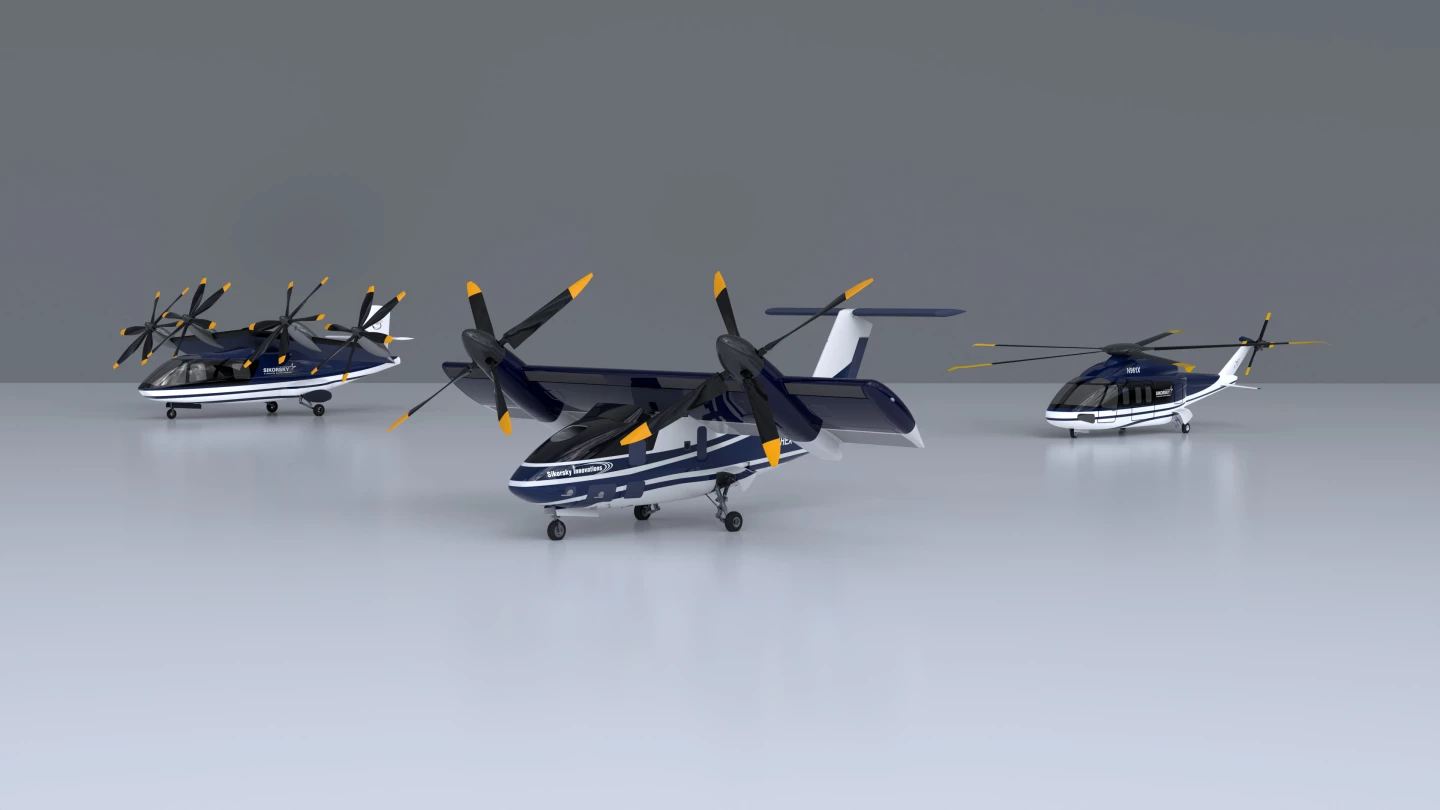Sikorsky is developing a hybrid-electric vertical takeoff and landing (HEX/VTOL) tilt-wing demonstrator, one of a new family of hybrid rotorcraft that will also offer pilot-optional autonomous flight.
There are so many companies building unconventional rotorcraft, many of which are electric or hybrid electric, that one more added to the growing list wouldn't warrant much attention. However, when the newest one is a major player in the aerospace world like Sikorsky, it's time to sit up and take notice.
The February 27 announcement isn't heavy on details, but does present a lot of insight into what's to come in the field of rotorcraft – especially from the mainstream competitors.

The new HEX program by the Lockheed Martin subsidiary features three hybrid, autonomous rotorcraft. One is a conventional helicopter, while the second is a quadcopter with tiltable propulsion nacelles. But the party piece is a tilt-wing design that allows for vertical takeoffs and landings, as well as the ability to transition to winged horizontal flight for greater speed and range.
The goal is to combine high speed with a range in excess of 500 nm (575 miles, 926 km). The completed demonstrator will have a maximum gross weight of 9,000 lb (4,000 kg) and feature a 1.2 MW-class turbogenerator. In the meantime, Sikorsky Innovations and GE Aerospace are completing a hybrid-electric power systems testbed with a 600 KW electric motor for hover performance tests.
The new HEX family will include different degrees of electrification. This allows for a mechanically simpler design, which is essential for a tilt-wing or tilt-rotor craft that often has problems with complex power and control mechanical linkage systems. In addition, the new vehicles will enjoy a high degree of autonomy, making them pilot optional.
"Within Sikorsky’s electric pillar, we are designing electric motors, power electronics and our own vehicle management hardware and actuation," said Igor Cherepinsky, Sikorsky Innovations director. "HEX will integrate these components, showcase the growing maturity of our MATRIX autonomy suite, and the potential for maintenance-free systems. Seeing the results will lead us to more efficient overall designs."
Source: Lockheed Martin






